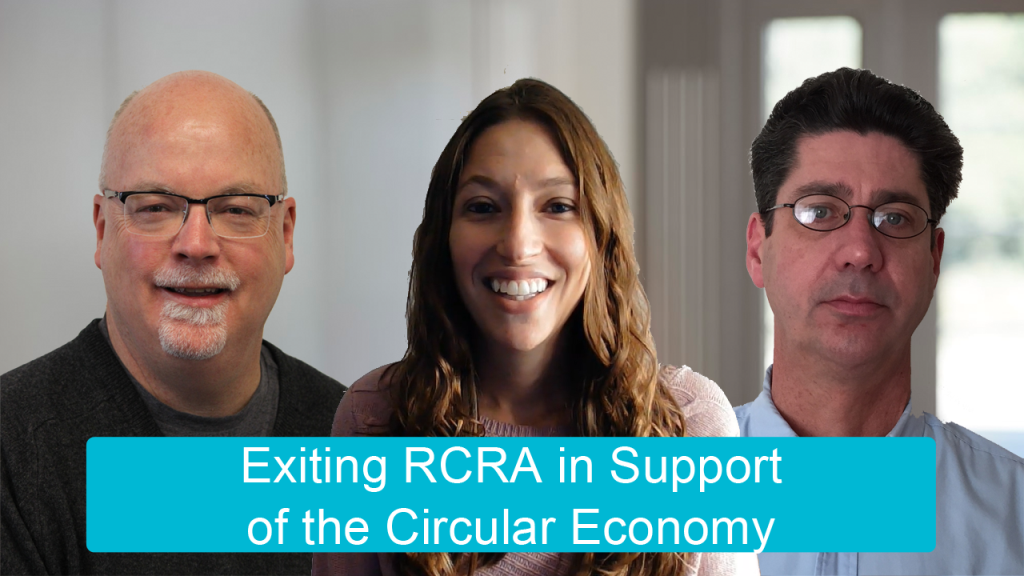
Exiting RCRA in Support of the Circular Economy 06/30 Slide Deck
At WTS, we pride ourselves on going beyond compliance in all of our business transactions. A major facet of that is a thorough understanding of the regulatory framework in which we operate. We couple that with our independent view in order to offer our clients the best solutions for managing their wastes and by-products. This page is dedicated to information regarding alternative solutions beyond disposal for regulated Hazardous Wastes yet remaining in full compliance. The page includes copies of WTS presentations, links to relevant USEPA sites, case studies / white papers we have published and a Frequently Asked Questions section. Please contact your WTS representative if you have any questions and interest in this topic.
Links to Hazardous Waste Recycling / Reuse from the US EPA
USEPA on Hazardous Waste Recycling
USEPA on Criteria for the Definition of Solid Waste and Solid and Hazardous Waste Exclusions
USEPA on 2018 Definition of Solid Waste
USEPA on Legitimate Hazardous Waste Recycling vs Sham Recycling
FAQ
When using a characteristic Haz-Waste or listed Haz-Waste as an ingredient in a product, do the recycling legitimacy criteria always need to be met? Does documentation of recycling legitimacy have to be submitted to USEPA for any given use of characteristic or listed Haz-Waste as an ingredient in a product?
The legitimate recycling criteria (4 factors) are by definition specific to reclamation of Hazardous Secondary Materials -including listed wastes – as noted in the Definition of Solid Waste Rule and therefore would not apply to reclamation of a characteristic by-product or sludge under Table 1. Documentation – including proof of meeting the 4 factors and also the requirement of “Documentation of claims that materials are not solid wastes or are conditionally exempt from regulation” does not have to necessarily be submitted to USEPA or authorized state but should be kept and made available upon request.
What differences / guidelines exist between preparing a material to become a saleable byproduct and inadvertently performing treatment of a RCRA waste without a Part B permit?
On-site treatment by a generator is generally not allowed without a permit a few exceptions (elementary neutralization, etc.). Reclamation done on site needs to follow the requirements set forth in the “Generator Controlled Exclusion “ or the direct reuse of a by-product by returning it to the original process as is – without any reclamation. We would not recommend performing any treatment without a permit.
Is “sham recycling” determined at the discretion of the state or federal regulators? Or is there a clear definition of the requirements for reclaim / recycling?
Sham recycling refers to claims by a hazardous waste generator that the waste is being recycled when it is in fact being discarded. A new definition at 40 CFR 261.2(g) codifies EPA’s concept of sham recycling: “A hazardous secondary material found to be sham recycled is considered discarded and a solid waste.” See this link from USEPA on Legitimate Hazardous Waste Recycling Versus Sham Recycling. The definition of Legitimate Recycling can be found in 40 CFR 260.43.
What is the best approach to reviewing the processes and by-products at my facility to determine if any exemptions or exclusions apply?
We would recommend that the best approach is to think of Value. Is there any value due to components in the waste stream (i.e.- solvents, metals) that can be reused or reclaimed? And then think of practicality – where does the potential end-market exist? What are the logistic hurdles and concerns we have to face? Does the potential end-value outweigh all those concerns?
What are requirements for conducting pilot lab trial to confirm feasibility of reusing a hazardous by-product as a supplemental raw material ingredient?
With the assumption that the “hazardous by-product” is currently being managed as a regulated Hazardous Waste, the requirements around a Treatability Study found in 40CFR 261.4 (d),(e),(f) need to be followed.
If I am able to exit RCRA on certain waste streams and this brings my hazardous generation below 1000kg/Month, do I follow LQG or SQG rules?
Excluded “wastes” do not to be counted in determining generator status.
Is utilizing universal waste rulings considered as exiting RCRA?
There are many paths to follow when exiting RCRA including Universal Wastes. In order for a material to be considered as a Universal Waste it first would have to have been regulated as a Hazardous Waste.
Is there a requirement that states how much material has to be used annually? (i.e. if I generate 1,000,000 annually pounds but only reuse/reclaim/resell 10,000 pounds annually)
No, there are no Volume Requirements considered with the exception of the requirements under Speculative Accumulation.
Can this be used as a waste minimization strategy?
Historically, waste minimization more typically refers to process changes or engineering changes in order to minimize production of waste. WTS considers re-use and reclamation of hazardous wastes in order to facilitate a return as a product or raw material to be equally important.
What happens if the receiving facility can no longer take the previously RCRA regulated material? Would the material need to be handled as hazardous waste until another suitable end user can be found?
Yes, if the end-use / user changes and the material is no longer being legitimately re-used or recycled, then it should return to being managed as RCRA Hazardous Waste. Documentation of the status should be maintained. If the receiving facility no longer is re-using or reclaiming legitimately, the facility is responsible for managing as a RCRA Hazardous Waste.
